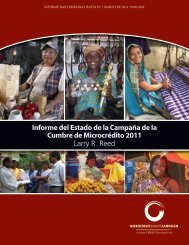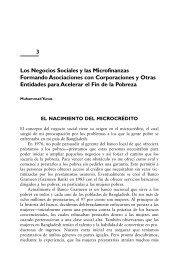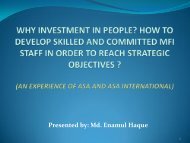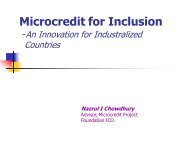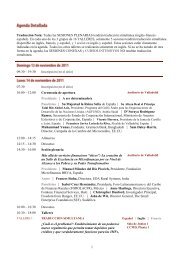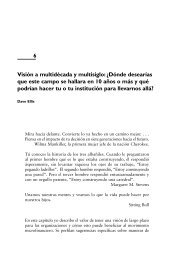Financial Literacy: A Step for Clients towards Financial Inclusion
Financial Literacy: A Step for Clients towards Financial Inclusion
Financial Literacy: A Step for Clients towards Financial Inclusion
Create successful ePaper yourself
Turn your PDF publications into a flip-book with our unique Google optimized e-Paper software.
Elements of Effective <strong>Financial</strong> Education<br />
The compelling conceptual arguments supporting financial education aside, the most<br />
exciting part of promoting this new service is the reaction of the learners. Across age<br />
groups, genders, and geographies, people have been thrilled and grateful to experience<br />
the power and optimism that comes with learning how to manage their money better. We<br />
know we are onto something when poor people quickly seize the value of financial<br />
education. Yet, financial education in developing countries is far too young and diverse<br />
in its target group, content, and delivery methodologies to articulate best practices. In<br />
fact, that may be a long time coming given its broad and evolving objectives, relevance<br />
and reach. For example, when Microfinance Opportunities initiated its market research<br />
and curriculum development as part of the Global <strong>Financial</strong> Education Program (GFEP)<br />
funded by the Citi Foundation eight years ago, financial education was primarily focused<br />
on personal money management. Today, the same goals are framed around a broader<br />
agenda of financial inclusion. There<strong>for</strong>e, we prefer to discuss emerging elements of<br />
effective education, drawing on experience to date in an admittedly sparsely populated<br />
space. Although the elements highlighted here reflect<br />
Never too young to learn about<br />
conventional educational wisdom – e.g. knowing the target<br />
money<br />
group, assuring that content is relevant and incorporating Aflatoun, an NGO headquartered in<br />
the Netherlands, has led the<br />
practical application – drawing these lessons from the<br />
movement to make financial<br />
context of a changing financial landscape and the place of education available to school-age<br />
children. Active in 75 countries, it<br />
financial education therein is new and illuminating.<br />
has developed curriculum and trained<br />
teachers in children centered<br />
methodologies involving art, games,<br />
<strong>Financial</strong> Education Has Many Audiences<br />
and theater to make learning as<br />
enjoyable as it is effective. In each of<br />
these countries, Aflatoun works<br />
As with any program, the target group determines financial through local partners, typically<br />
child-focused NGOs. It has also had<br />
education objectives and content. While many basic<br />
some initial success in advocating <strong>for</strong><br />
the inclusion of financial education<br />
principles of money management are universal, financial in national school curriculum (e.g.<br />
Egypt). Ministries of education are<br />
knowledge, experience and behaviors vary widely across<br />
an important frontier <strong>for</strong> financial<br />
individuals, households and populations; there<strong>for</strong>e, programs education; achieving financial<br />
literacy will take at least a generation<br />
will look very different depending on who the learners are. and schools are an obvious channel<br />
<strong>for</strong> generational change<br />
(www.aflatoun.org).<br />
10




